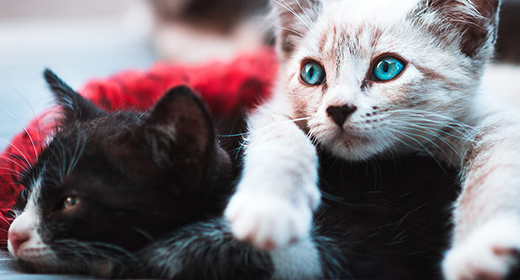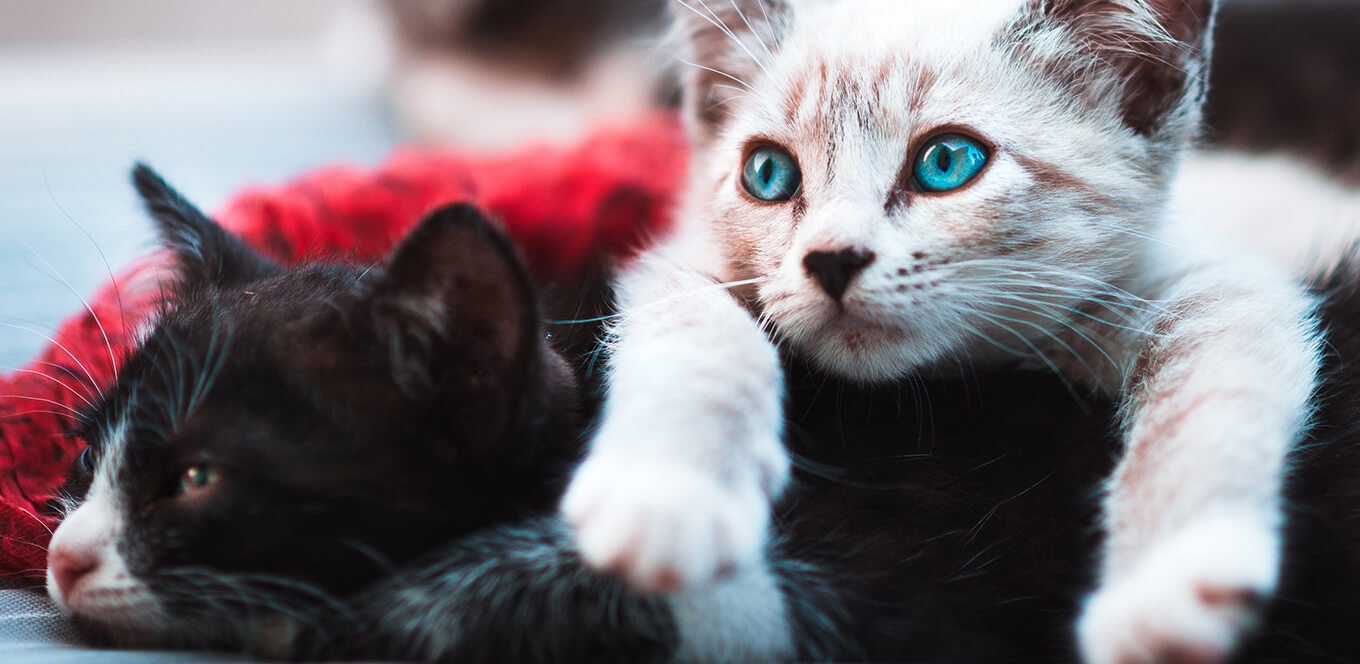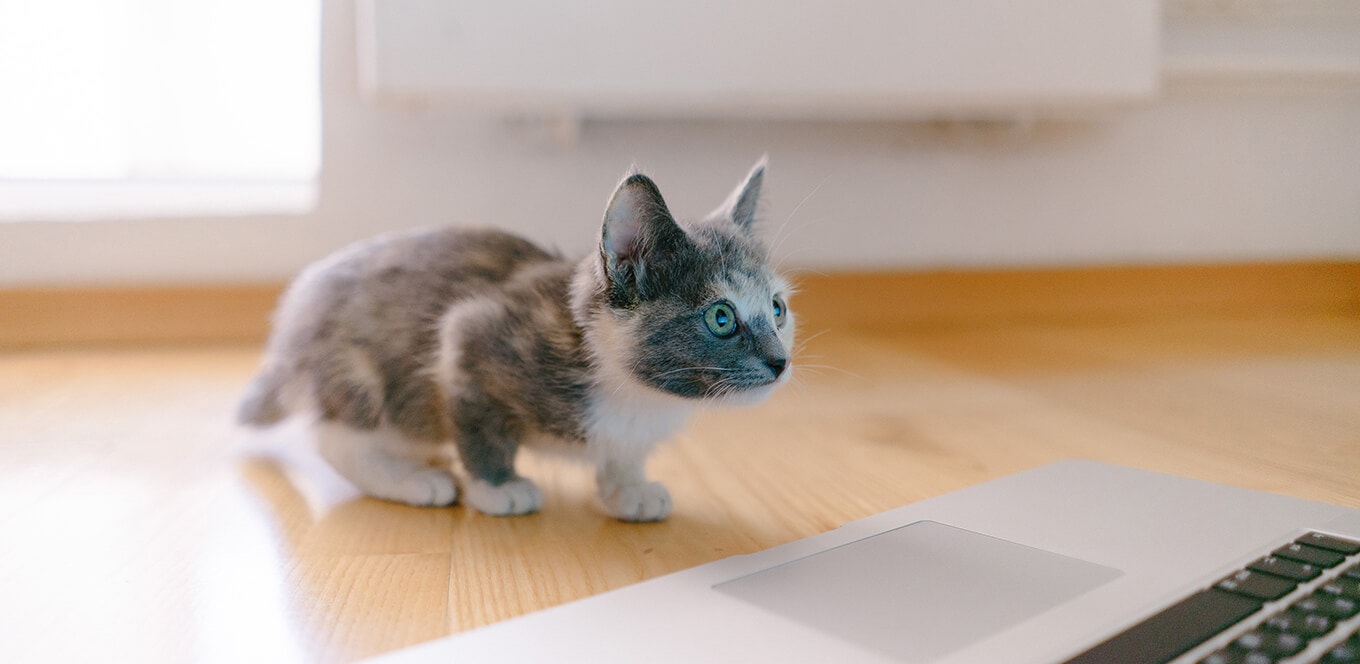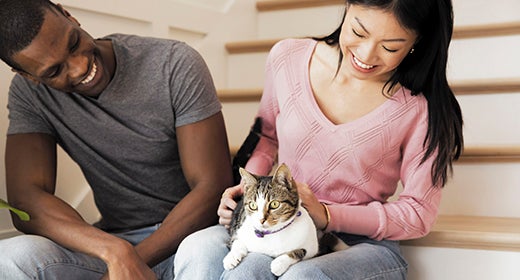

Taurine is an important component found in all IAMS™ kitten foods. This essential amino acid is critical for normal heart muscle function, vision and reproduction in kittens. It is also needed to form the bile salts that aid in digestion. Unlike other amino acids, taurine is found as a free amino acid in body tissues, such as the heart and eyes, and is not incorporated into proteins.
Most mammals manufacture taurine from other amino acids. However, kittens cannot manufacture a sufficient amount and therefore must acquire enough additional taurine through diet to meet their needs. In pet food, taurine is naturally found in animal-based protein ingredients and also can be added separately.
IAMS kitten foods are formulated with high-quality animal-based proteins as their primary ingredient. In addition, they are supplemented with extra taurine.
We supplement taurine in IAMS dry and canned cat foods to ensure we provide optimal levels of this essential nutrient. IAMS wet kitten foods, such as IAMS™ Perfect Portions™ Healthy Kitten Paté with Chicken, are supplemented with taurine because they must contain as much as twice the amount of taurine found in dry food for cats to maintain adequate blood taurine levels. The canning process may affect the complex taurine balance in your cat or kitten. Our wet cat foods are supplemented with taurine to meet these higher needs.
IAMS dry kitten foods, such as IAMS™ ProActive Health™ Healthy Kitten, also include taurine as an ingredient to supplement the primary source of this amino acid, which is animal-based protein from sources such as chicken, egg, lamb and fish. However, these sources can vary in their taurine content, and adding more taurine is a sound approach to ensure optimal taurine levels.
Kittens that eat a diet deficient in taurine can develop several serious health conditions.
Taurine is essential to the proper development and function of cells in the retina of the eye. If insufficient taurine is present, the retinal cells don’t function properly and may die, eventually causing impaired vision and even blindness. This process is referred to as feline central retinal degeneration.
Taurine is also necessary for normal function of the heart muscle cells. Taurine deficiency leads to a weakening of the heart muscle, which, in turn, can lead to heart failure. This condition is known as dilated cardiomyopathy and can be fatal.
To help protect your kitten’s health, both now and when she is fully grown, make sure to feed a diet with sufficient taurine. Learn more about the nutritional needs of kittens.
Reference
Case L, et al. Canine and Feline Nutrition. 3rd ed. Maryland Heights, MO: Mosby Elsevier, 2011.




Since most feline creatures do not like water, bathing a kitten can seem to be a daunting task. Yet, as a cat parent, you cannot give up. You must bathe your kitty, especially to desensitize them to the experience and prevent skin problems. However, most first-time cat parents do not know how to get started with bathing their kittens. If you are one of them, fret not! With patience and a gentle approach, you can turn bathing time into a positive experience for your feline friend. So, read on! This article takes a deep dive into how to bathe a kitten.
Before you go on to bathing your kitten, do not forget to trim its nails. Feline creatures do not hesitate from clawing anyone or anything that triggers discomfort in them. Not even their own caregivers. Similarly, there are multiple other things you must ensure while bathing your kitten. Let's explore them in brief:
Brush your kitten's fur
Kittens shed all year long. Like humans, they might shed in excess while bathing, and that might clog your draining system. Hence, it's best to brush your kitty's fur thoroughly to get rid of the loose fur before you place it in the bathtub.
Pick the right time
Your kitten is going to oppose the bathing time with full force when it is highly energetic. However, when it is tired and exhausted, your pet might just let you do your thing. So, bathe your newborn kitty after tiresome activities like playtime, exercise, etc.
Use a kitten-specific shampoo
When bathing your kitty, go for a bottle of shampoo that is specifically developed for cats. And avoid shampoos used by humans at all costs. As cats groom themselves, chances are that they may ingest some shampoo residue left on their fur.
Rinse thoroughly
Use a cup or small container to rinse off the shampoo from your kitten’s fur, ensuring that water doesn’t get into its ears, nose, or eyes. Since you want your kitty to feel comfortable during the bathing session, avoid using extremely hot or cold water. Instead, go for a few degrees above lukewarm. Moreover, run your fingers through its coat to evenly distribute the water.
Shower your kitten with treats
When you are done bathing your kitten, reward it with treats immediately. Playtime and treats can help your feline friend resonate bathing time with fun moments. Treats can also come in handy to distract your pet if it starts to get anxious.
Every time you bathe your kitty, you must dry it thoroughly. In fact, it is one of the most important aspects of learning how to wash a kitten as damp fur can lead to skin problems. However, you do not want to vigorously rub a towel on your pet’s fur. It will only cause discomfort and irritation. Since bathing is a stressful experience for most kitties, you need to be extra careful while drying their fur up. So, here’s a step-by-step guide on drying your kitten’s coat:
Step 1: Place your kitten on a clean and dry towel.
Step 2: Wrap your kitty in the aforesaid towel.
Step 3: Sit on a chair with your pet on your lap and allow it to calm down.
Step 4: Press the towel gently against your kitten’s fur to get rid of excess water.
Step 5: Continue to press dry your kitty’s fur until its damp and not soaking wet.
Cats and kittens have an aversion to water due to their ancestral history. These feline creatures were once desert-dwelling animals, which means they rarely encountered rains, lakes, or rivers. Hence, all types of water – except drinking water – is alien to them. And that’s probably why your fur baby tries to resist the bathing session. However, being gentle with your little kitty can prevent issues and make the whole experience a little comfortable for it. Moreover, do not submerge your furry friend under running water and keep its bath time as short as possible.
Note: If your kitten continues to show extreme distress during bath time, consult a veterinarian.
Now that you know how to bathe a kitten, go on and help your pet groom. The time spent bathing your kitty provides you two with an opportunity to establish an unbreakable bond. Moreover, it will familiarize your kitten with your touch, fostering trust and strong cat-owner relationship.